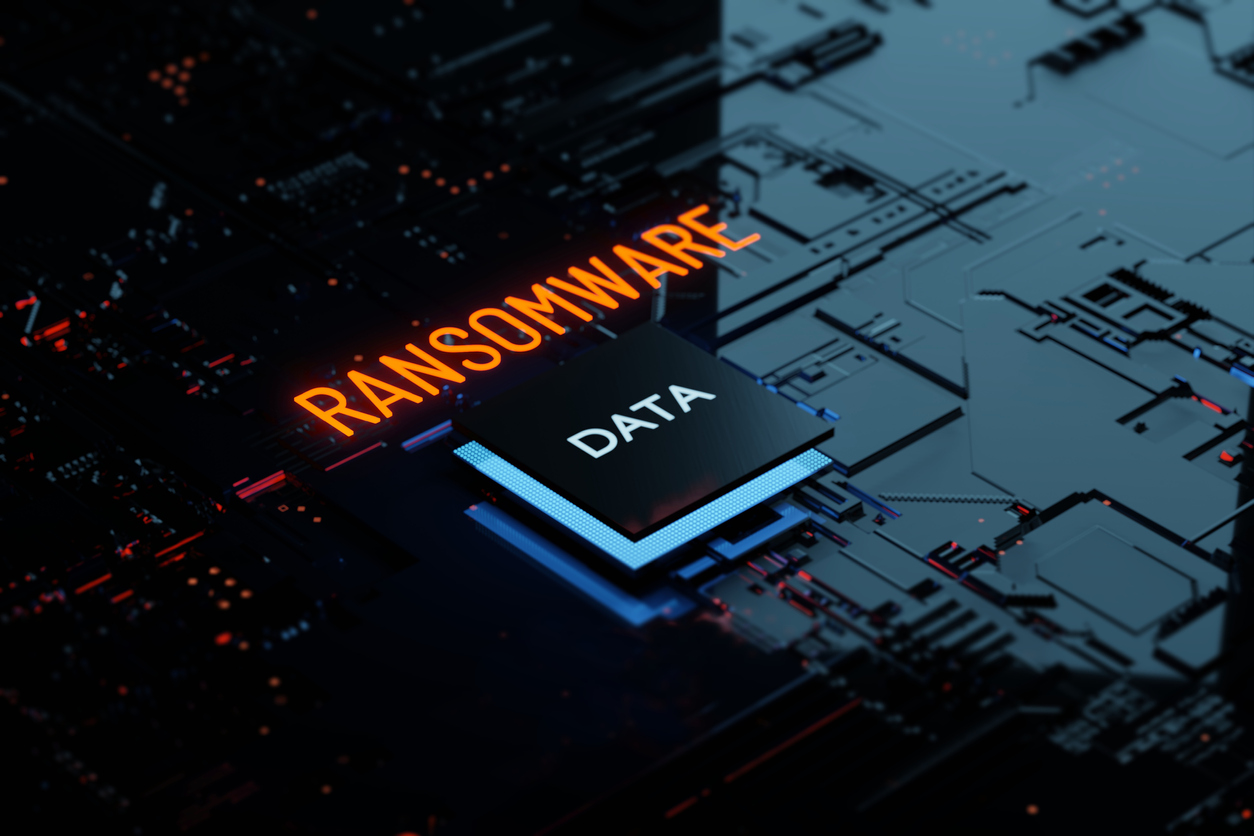
During the course of the COVID-19 pandemic, cybercrime has seen an incredible 600% increase — and it’s not slowing down. This alarming trend means that proper cybersecurity implementation is more important than ever.
A large number of these attacks are ransomware attacks. Although the first ransomware software hit the scene back in the ‘80s, the use of this type of attack has seen a massive explosion in recent years.
In this article, we will explain what ransomware is and explore six ways a small business can avoid being the victim of a ransomware attack.
Ransomware Explained
Ransomware is a malicious type of software (malware) that infects the host computer and encrypts all of the files and data before demanding payment for the decryption key. Typically, the hacker requests the money via either a credit card or, more commonly, a cryptocurrency like bitcoin.
The attackers aren’t picky about who they go after either. Hospitals, schools, retail businesses, government agencies and entities, and even individuals can all be potential targets.
How Does Ransomware Work?
Here are the key steps involved in a ransomware attack:
Infect
The first step, of course, is to infect the network. Some malicious software gets in via phishing links in suspicious emails. In other cases, hackers gain remote access to your network with a remote desktop protocol (RDP). Attackers with physical access can even infect your network by using a USB drive or some other method.
Encrypt
Once the infection occurs, the next step is to start encrypting the files. Sometimes these attacks can even delete backups to hinder recovery efforts.
Ransom Note
The final step is demanding money. Normally, there’s a pop-up that lets the victim know that they have been infected and their files are encrypted. The note gives instructions on how to make payments to receive the decryption key. Most ransomware comes with a time limit and threats to delete everything if the ransom goes unpaid.
6 Ways to Avoid Ransomware Attacks
These six methods and strategies can help protect your files and prevent ransomware attacks.
1. Educate Your Team on Proper Security Measures
Typically, a network gets infected through social engineering methods such as phishing and vishing. Unfortunately, people just aren’t aware of this fact. One study found that around 43% of employees are unaware that clicking on a suspicious link opens them up for a hack.
Teaching your staff to spot these tactics can stop a ransomware attack from happening altogether. Develop a security training program that teaches your people how to recognize and avoid suspicious-looking emails. Once they cultivate this type of mindset, everyone becomes part of the security team and protects your business.
2. Keep Your Data Backed Up Regularly
The most effective way to get around ransomware is by maintaining and regularly backing up your data and files. That way should your network get infected, and your data end up held hostage, you don’t have to pay to recover information.
For further protection, you can have backups stored offline and on a server that’s cold — meaning it’s not connected to the internet. Another option is to back up your data to the cloud. There, you can rely on managed services and their IT expertise to protect your files.
3. Make Use of a Firewall
A firewall will be your first line of defense for all threats. Firewalls are network security devices with the main function of monitoring incoming and outgoing traffic, looking for potential threats or malicious-seeming traffic. However, a firewall is only as good as its configuration and only works if it’s actually in use.
4. Conduct Regular Security Assessments
Security testing helps companies understand the limits of their infrastructure and can identify weaknesses that lead to breaches. One simple test that should be performed quarterly is a vulnerability assessment because it helps expose weak points.
System misconfigurations are among the many issues a security test can identify. Many tests also include flawed account privileges, weak passwords, and problems with the authentication process. Regular testing gives organizations the opportunity to verify their network or system health and improve where this is possible.
5. Make Sure There are Strong Password Requirements
Normally, a hacker can use brute force tactics to guess passwords to gain access to your network. It works well for them when you use weak and default passwords. If your organization does this, then you leave yourself open and ripe for attack.
This best practice here is to implement strong company-wide password requirements and make use of two-factor authentication (2FA).
6. Update Systems Regularly
Yes, we all hate seeing those pop-ups demanding we update on our personal devices, but it’s good practice when it comes to your organization. In fact, all devices should be updated regularly and often.
Hackers are always looking for exploits in older versions of software and devices. Updating helps close those potential risky openings and gaps in your security. Turning on “auto-update” can help ensure that you always have the latest firmware.
Increase Your Security with SpireTech
The managed services offered by SpireTech can help you ensure you’re properly protected against ransomware and other attacks on your network. If you’re looking for a trusted MSP you can count on in the Portland area, your search should end with SpireTech!
Contact us to schedule a 30-minute consultation today to see what our MSP can do for you.
